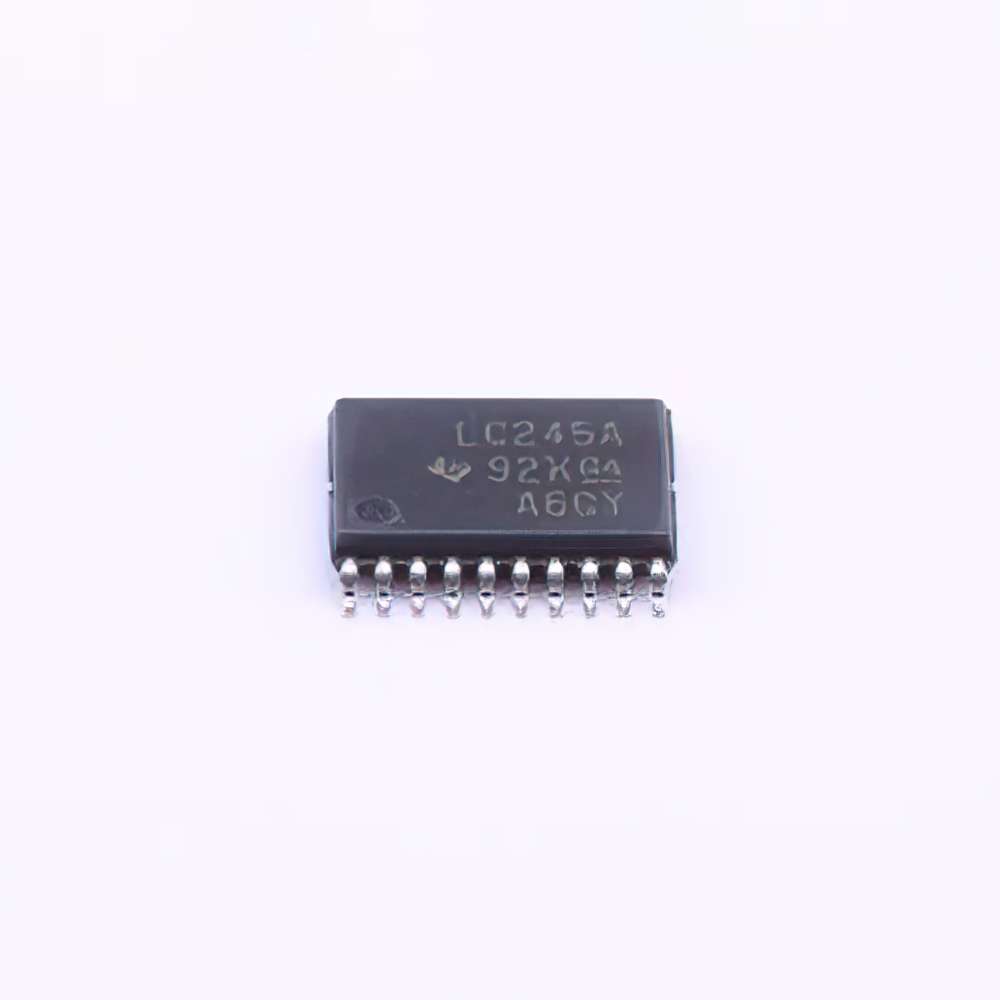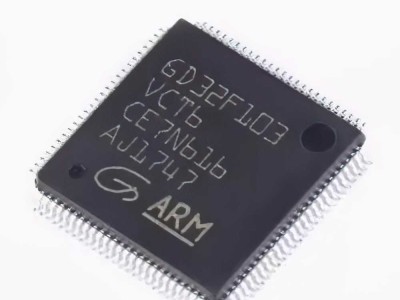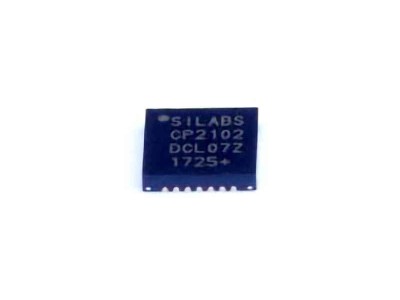
The Texas Instruments SN74LVC245APWR is a widely used octal bus transceiver with 3-state outputs, designed to facilitate data transfer between two devices that operate at different voltage levels. In this article, we explore how this versatile IC is applied in various data bus level shifting scenarios, highlighting its critical role in Communication systems, Microcontrollers , and other electronic designs that require seamless voltage compatibility.
SN74LVC245APWR, Data Bus, Level Shifting, Voltage Translation, Bus Transceiver, 3-State Outputs, Communication Systems, Microcontrollers, Electronics Design, Logic Devices, Signal Integrity.
Understanding the Role of SN74LVC245APWR in Data Bus Level Shifting
In modern electronic systems, data buses form the backbone of communication between various components. Whether it is a microcontroller, a sensor, or an FPGA , these systems rely heavily on the seamless transfer of data across multiple channels. However, a key challenge in such systems arises when components operate at different voltage levels, creating the need for level shifting or voltage translation. This is where devices like the SN74LVC245APWR come into play.
The SN74LVC245APWR is an 8-bit octal bus transceiver with 3-state outputs and designed specifically to handle data bus level shifting. It provides high-speed bidirectional data transfer, and its versatility allows it to perform not just as a buffer but also as a voltage translator in data communication systems. It supports low-voltage logic (down to 1.8V) while being compatible with higher voltage levels, such as 5V logic, making it an ideal choice for designs that need to interface components with different operating voltages.
What is Level Shifting?
Before diving into specific applications, it’s crucial to understand the concept of level shifting. Level shifting is the process of adjusting signal voltage levels to ensure that different components in a system can communicate effectively. For example, a microcontroller operating at 3.3V may need to interface with peripherals running at 5V. Without level shifting, the logic levels could be incompatible, leading to data corruption, malfunction, or even damage to sensitive components.
The Role of SN74LVC245APWR in Level Shifting
The SN74LVC245APWR addresses this issue by providing a reliable solution to translate voltage levels between devices. This IC has the ability to operate in both 3.3V and 5V environments, making it a perfect fit for applications that require flexible and robust level shifting capabilities.
High-Speed Performance: With data transfer rates reaching up to 100 MHz, the SN74LVC245APWR ensures that even high-speed applications benefit from reliable signal transmission. Its fast response time allows for high-frequency communication between devices while maintaining signal integrity.
Bidirectional Communication: The IC can function in both directions, meaning it can handle data being sent and received. This feature is especially useful for bus systems that require bidirectional data flow, such as I2C or SPI communication.
3-State Outputs: The device's 3-state output allows it to be disconnected from the data bus when not in use. This feature is critical in preventing data conflicts when multiple devices share the same bus. It also aids in reducing power consumption by preventing unnecessary signal driving.
Wide Voltage Compatibility: The SN74LVC245APWR is compatible with a wide range of voltages. It can operate with a Vcc as low as 1.65V and as high as 5.5V, making it ideal for interfacing modern low-voltage logic devices with legacy components that run on higher voltages.
Key Application Scenarios of SN74LVC245APWR
1. Microcontroller Communication with Peripherals
Microcontrollers are central to many Embedded systems, but they often need to communicate with peripherals that operate at different voltage levels. Consider a microcontroller operating at 3.3V, trying to communicate with an older peripheral device or sensor that works with 5V logic. Directly connecting the microcontroller to the sensor can result in signal mismatch, damaging the microcontroller or causing unreliable data transfer.
By incorporating the SN74LVC245APWR between the microcontroller and the peripheral, the voltage levels are shifted appropriately, allowing seamless communication between the two components. The IC ensures that the 3.3V signals from the microcontroller are correctly translated to 5V levels that the peripheral can understand, while simultaneously handling the reverse voltage conversion when data is sent back to the microcontroller.
2. FPGA and Processor Interface
In systems where an FPGA interfaces with a processor or another high-speed logic device, data integrity and proper voltage levels are critical. The FPGA may operate at a different voltage than the processor, creating potential issues with signal levels. The SN74LVC245APWR serves as a buffer and voltage translator, ensuring that signals between the FPGA and the processor are correctly translated without any data loss.
This application is common in high-performance computing, signal processing systems, and custom hardware development. The flexibility of the SN74LVC245APWR ensures that these components can communicate without worrying about incompatible logic levels, making it an essential tool for engineers and developers in complex electronic designs.
3. I2C and SPI Bus Systems
In communication protocols like I2C and SPI, multiple devices are often connected to the same bus. If these devices operate at different voltage levels, there's a risk of signal degradation or even damage to the devices. The SN74LVC245APWR's bidirectional nature makes it an excellent choice for such systems. It can translate the signals on the bus in both directions, ensuring that all devices, regardless of their voltage level, can communicate properly on the same bus.
This feature is particularly useful in IoT devices, sensor networks, and other applications where multiple components must be interconnected and operate reliably despite varying voltage standards.
Conclusion
In Part 1 of this article, we have explored the fundamental aspects of the SN74LVC245APWR and its role in data bus level shifting. By providing voltage translation, high-speed communication, and bidirectional data flow, this IC has proven indispensable in a wide range of applications, including microcontroller-to-peripheral communication, FPGA-to-processor interfacing, and I2C/SPI bus systems. As electronic systems become increasingly complex, the importance of robust and flexible solutions like the SN74LVC245APWR in ensuring seamless communication across diverse voltage domains cannot be overstated.
Advanced Application Examples and Benefits of SN74LVC245APWR in Data Bus Level Shifting
In Part 1, we covered the basics of how the SN74LVC245APWR performs data bus level shifting, as well as several key application areas. Now, let’s delve deeper into more advanced use cases, highlighting the significant benefits of this versatile device in complex electronic designs. We will explore how it contributes to the overall reliability, efficiency, and scalability of various systems.
4. Level Shifting for Mixed-Voltage Systems
As electronic systems become more integrated, designers often need to create mixed-voltage environments where different components run at different logic levels. A typical example can be found in sensor networks, where sensors operate at lower voltages to save power, while the central processing unit (CPU) or controller may work at a higher voltage to handle more complex tasks.
In such systems, the SN74LVC245APWR can be placed between the sensor module s and the CPU. The transceiver ensures that data coming from the low-voltage sensors is correctly shifted to a higher voltage that the CPU can process, while also ensuring the signals sent back to the sensors are within the correct voltage range.
This capability is invaluable in battery-powered applications, where low-voltage components help conserve energy, and at the same time, the higher-voltage components ensure robust performance when required.
5. Voltage Level Shifting in Automotive Applications
The automotive industry presents unique challenges when it comes to electronic systems. With a vast array of sensors, controllers, and other embedded systems that need to communicate, the voltage levels often vary from one component to another. For example, certain automotive sensors may operate at 3.3V, while the central ECU (Electronic Control Unit) could work at 5V or even higher. Directly interfacing such components could lead to malfunction or potential damage.
The SN74LVC245APWR helps in such automotive-level voltage translation, ensuring that communication between components like sensors, actuators, and ECUs is smooth and reliable. This is especially important in safety-critical systems where reliability is paramount. The IC's fast switching capabilities ensure that data is transferred quickly and accurately, which is vital in high-speed control systems in automotive electronics.
6. Embedded Systems Design and Prototyping
In embedded system design, especially during prototyping, engineers often work with components from different suppliers or with different voltage requirements. The SN74LVC245APWR can be used as a simple yet effective level shifter, allowing engineers to focus on system functionality rather than worrying about voltage incompatibility. This IC enables quick and easy interface between components running at different voltages without requiring complex circuit design.
For example, during prototyping, a developer may need to test a microcontroller at 3.3V with a peripheral sensor running at 5V. Instead of designing a custom level shifting circuit, the SN74LVC245APWR can be integrated into the design, saving time and ensuring a reliable test environment.
7. Signal Integrity in High-Speed Data Transfer
Signal integrity is a critical factor in high-speed digital systems, where even small distortions or voltage mismatches can result in data errors. The SN74LVC245APWR is designed to handle high-frequency signals while maintaining signal integrity. By providing a clean and reliable voltage translation between components operating at different logic levels, it helps reduce the risk of signal degradation, ensuring that data is transferred accurately even in fast-paced, high-speed environments.
This makes it an essential component for high-frequency communication systems, including telecommunications equipment, data storage systems, and advanced industrial control systems, where accurate and fast data transfer is crucial for performance.
Conclusion
The SN74LVC245APWR is an indispensable tool for any engineer dealing with mixed-voltage environments. Its ability to shift voltage levels in both directions, while maintaining high-speed performance and signal integrity, makes it ideal for a wide array of applications, including embedded systems, automotive electronics, and high-speed communication systems. By understanding its key benefits and advanced applications, engineers can design more reliable and efficient systems that operate seamlessly across different voltage domains.
In Part 2, we've seen how the SN74LVC245APWR plays a pivotal role in ensuring efficient communication across complex systems, offering reliability, scalability, and ease of integration. As electronic systems continue to evolve, the need for adaptable and reliable level shifting solutions like the SN74LVC245APWR will only grow, further cementing its place as an essential component in modern electronic designs.
If you are looking for more information on commonly used Electronic Components Models or about Electronic Components Product Catalog datasheets, compile all purchasing and CAD information into one place.


